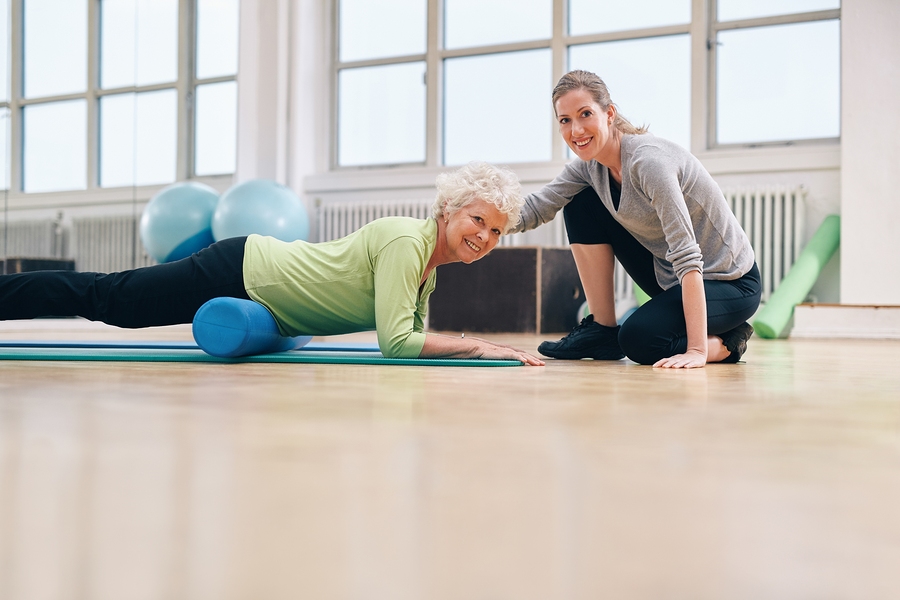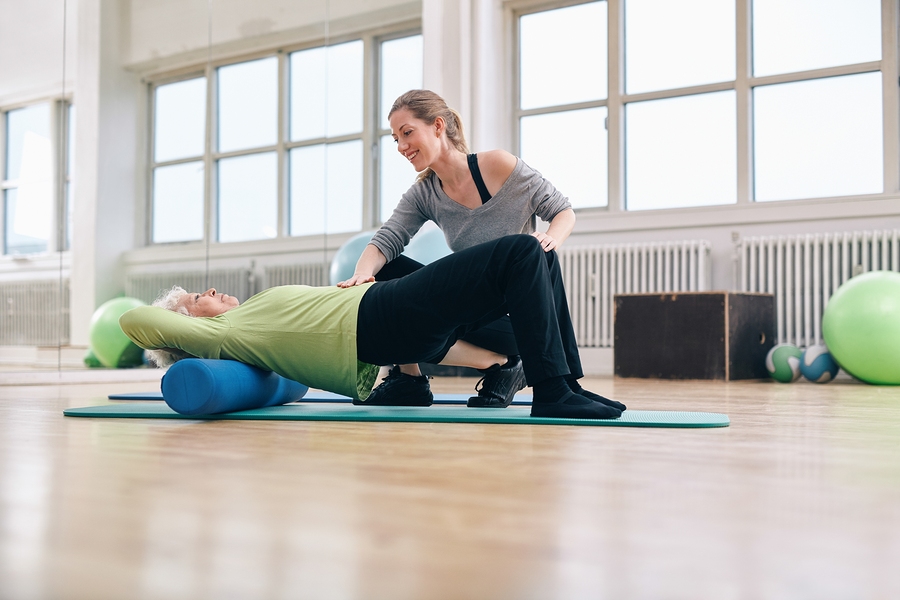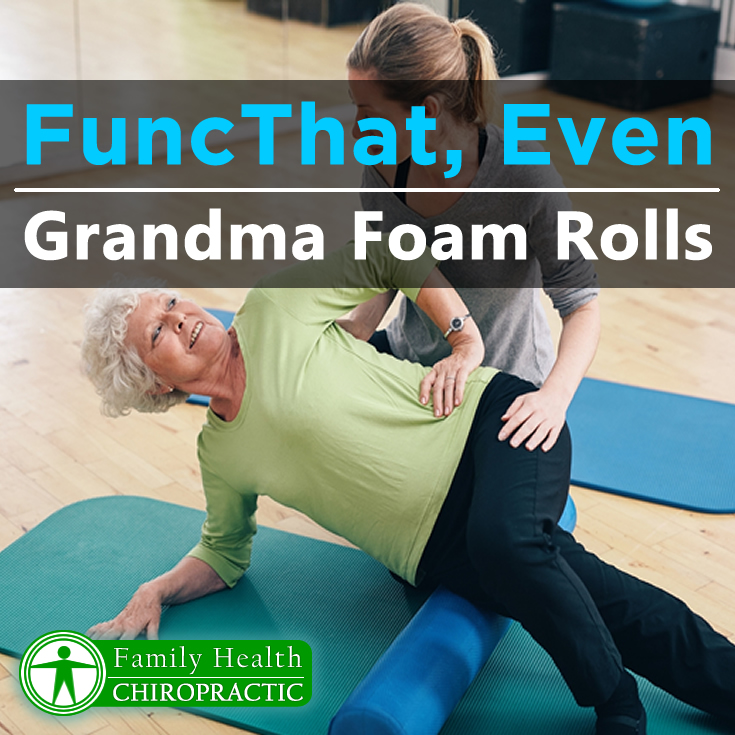Are you using a Foam Roller yet?
You might have skipped exercising with a foam roller, but surely you have seen many of these around. The long cylindrical looking tubes that people are grimacing over as they roll back and forth in gyms across America. Perhaps you have one but don't use it? Or you simply haven't paid any attention to their utility yet!
The truth is, foam rollers might just be the most effective and least expensive warm up exercise and method for self-myofascial release. Uh-oh, what is “myofascial release”, you ask? It's a therapy aimed at skeletal muscle immobility and pain treatment. You relax your muscles, improving blood circulation and stimulating the aforementioned muscles by stretching them.
Yes, that's right – foam rolling will help you do all of that. Let's see how.

Yes. I expect even my grandmother to use a foam roller!
How Does Foam Rolling Actually Work?
The most widespread foam rollers come in the form of a cylinder. Usually they are around 12 inches long and 6 inches in diameter. Depending on their usage (as in, which muscle groups they are aimed at), their size might differ. You might even see a gigantic foam roller of 36 inches if you want to focus on some back muscles!
Foam rolling works in a very plain way: you roll specific muscle groups against the foam roller itself. During the process you are, of course, using your own body weight. Foam rolling is, in its concept, a very customizable experience. What we mean by that is that you can choose the groups you'll be working on, the pressure you'll be applying and the length of your work out.
What happens when you're using a foam roller?
Plainly put, you will experience an exercise akin to massage. Your circulation will be boosted and the light friction will help alleviate both pain, stiffness or tension. Of course, foam rolling also builds strength as you are engaging your muscle groups while rolling around. Your balance will also be at advantage as foam rollers require you to “guide” your movements in pursuit of a balanced stance.
That said, foam rolling is a great warm up exercise. You can use it as a standalone work out, but it's even better in setting up your body (and muscles) for the real deal. Already loosened up, your muscles are ready for the main workout ordeal, guaranteeing a more effective and pleasant set of exercises.
The Amazing Benefits of Foam Rolling

Female trainer instructing senior woman going exercise on a foam roller. Elder woman doing pilates workout with personal instructor at gym.
Ok, you got it: setting up with foam rolling is one of the best things you've ever done for your workout routine. But foam rolling also has a few stunning benefits that are its own. There would be a reason for so many specialists, including us, to advise on practicing, right?
The first very important benefit of foam rolling is the improved blood circulation. Proper circulation is invaluable to your body and foam rolling stimulates blood circulation throughout muscles, tendons, fascia, skin, and many more, depending on the scope of your exercises.
What does a better blood circulation also lead to? Exchange within the body, of course – for example the one of nutrients. Circulation boosts how your cells function overall and improves the how they “communicate” to each other.
Our everyday life has left many people with spine problems. Sitting in front of a computer and many other activities have warped our positioning. Thus many experience spinal pain and limited spinal motion (and flexibility).
Foam rollers can be used to roll your spine against them in order to break the harmful spell of routine. The gentle massage and movements will stretch your joints and tissues, leading to an increased spinal motion (and range of motion, more exactly). They will also relax the area, reducing any pain or stiffness.
Things To Remember When Foam Rolling
As with other physical exercises, using a foam roller has to be controlled in some way. There are a few things you might want to remember when foam rolling as to maximize the benefits of the experience and minimize any risks of injury.
First of all, you need to use the foam roller at a careful pace. If you roll too fast, your efforts might be countereffective. Foam rolling should be slow, focused and gentle. Think of massaging, as it's similar to how foam rolling operates – expert massage therapists never hurry!
Secondly, remember to stay hydrated. Drinking water should already be a part of your workout routine, but don't think that foam rolling excludes this habit. Your tissues need to be “watered” – it will improve the effect of your foam rolling exercises.
You might also consider being versatile in your exercises. Engage your muscles in a more flexible way – by rolling in various directions. Up to down and down to up, left to right or right to left; a more versatile approach will amplify the effect of foam rolling.
And of course, as a closure – remember to snatch your foam roller and use it as frequently as you can. Best case scenario is you foam rolling every single day! It doesn't need to be too long and you don't need to view it as a tiring, demanding exercise. As we said, foam rolling is very similar to massage for your muscles and tissues – only you're the one actually doing it. Its simplicity and gentleness will surely leave you addicted, once you establish your foam rolling routine.



